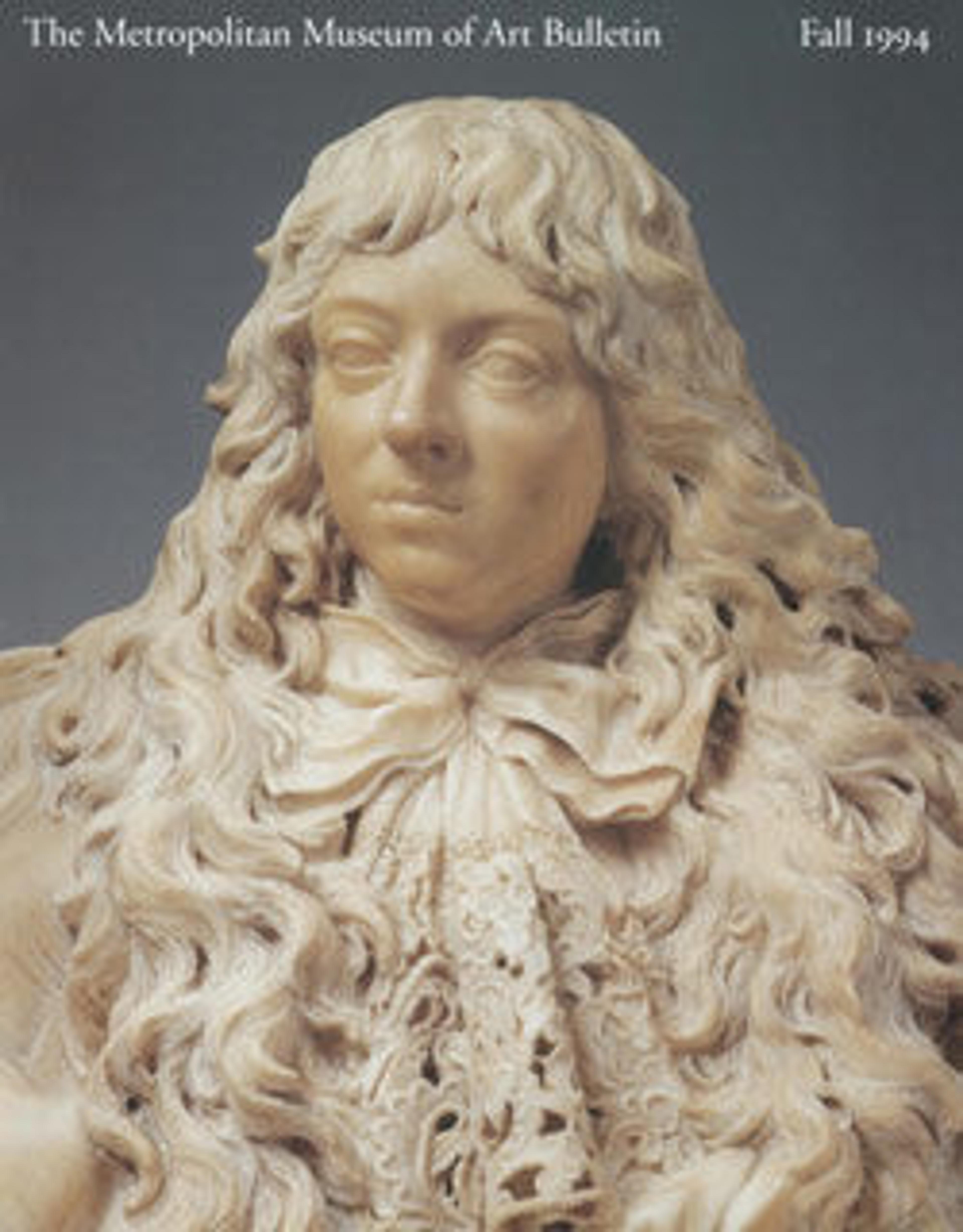Cosmetic Spoon
Decorated spoons were especially popular in the courtly circles of the New Kingdom. In their forms and ornament, allusions were made to themes and myths of rebirth and renewal, though their actual use is poorly understood.
This ivory spoon, its symmetry enhanced by a fine interplay of shapes and lines, is datable to the nineteenth dynasty. The discoid bowl of the spoon represents the life-giving sun. The handle decoration consists mainly of a compressed version of the shrine sistrum, a rattle that is the emblem of Hathor, the great goddess of fruitfulness. In the sistrum Hathor wears as headgear a small volute-framed shrine with a cutout doorway where the rattling elements were strung. Here the shrine is reduced to a framed cutout, still flanked by volutes, above her triangular face and cow's ears.
The overall composition is a small visual conceit. Most simply it is a reinterpretation of the symbolic imagery of mirrors, in which the sun and Hathor are also associated. But here the sun-disk is perhaps actually being assimilated to the percussion housing of the sistrum or it may even be thought of as a divinity appearing in the doorway of the shrine sistrum.
This ivory spoon, its symmetry enhanced by a fine interplay of shapes and lines, is datable to the nineteenth dynasty. The discoid bowl of the spoon represents the life-giving sun. The handle decoration consists mainly of a compressed version of the shrine sistrum, a rattle that is the emblem of Hathor, the great goddess of fruitfulness. In the sistrum Hathor wears as headgear a small volute-framed shrine with a cutout doorway where the rattling elements were strung. Here the shrine is reduced to a framed cutout, still flanked by volutes, above her triangular face and cow's ears.
The overall composition is a small visual conceit. Most simply it is a reinterpretation of the symbolic imagery of mirrors, in which the sun and Hathor are also associated. But here the sun-disk is perhaps actually being assimilated to the percussion housing of the sistrum or it may even be thought of as a divinity appearing in the doorway of the shrine sistrum.
Artwork Details
- Title:Cosmetic Spoon
- Period:New Kingdom, Ramesside
- Dynasty:Dynasty 19–20
- Date:ca. 1295–1070 B.C.
- Geography:From Egypt
- Medium:Ivory
- Dimensions:L. 9.6 cm (3 3/4 in.); W. 5.6 cm (2 3/16 in.); D. 1.1 cm (7/16 in.)
- Credit Line:Purchase, Lila Acheson Wallace and Russell and Judith Carson Gifts, 1994
- Object Number:1994.70
- Curatorial Department: Egyptian Art
More Artwork
Research Resources
The Met provides unparalleled resources for research and welcomes an international community of students and scholars. The Met's Open Access API is where creators and researchers can connect to the The Met collection. Open Access data and public domain images are available for unrestricted commercial and noncommercial use without permission or fee.
To request images under copyright and other restrictions, please use this Image Request form.
Feedback
We continue to research and examine historical and cultural context for objects in The Met collection. If you have comments or questions about this object record, please contact us using the form below. The Museum looks forward to receiving your comments.
